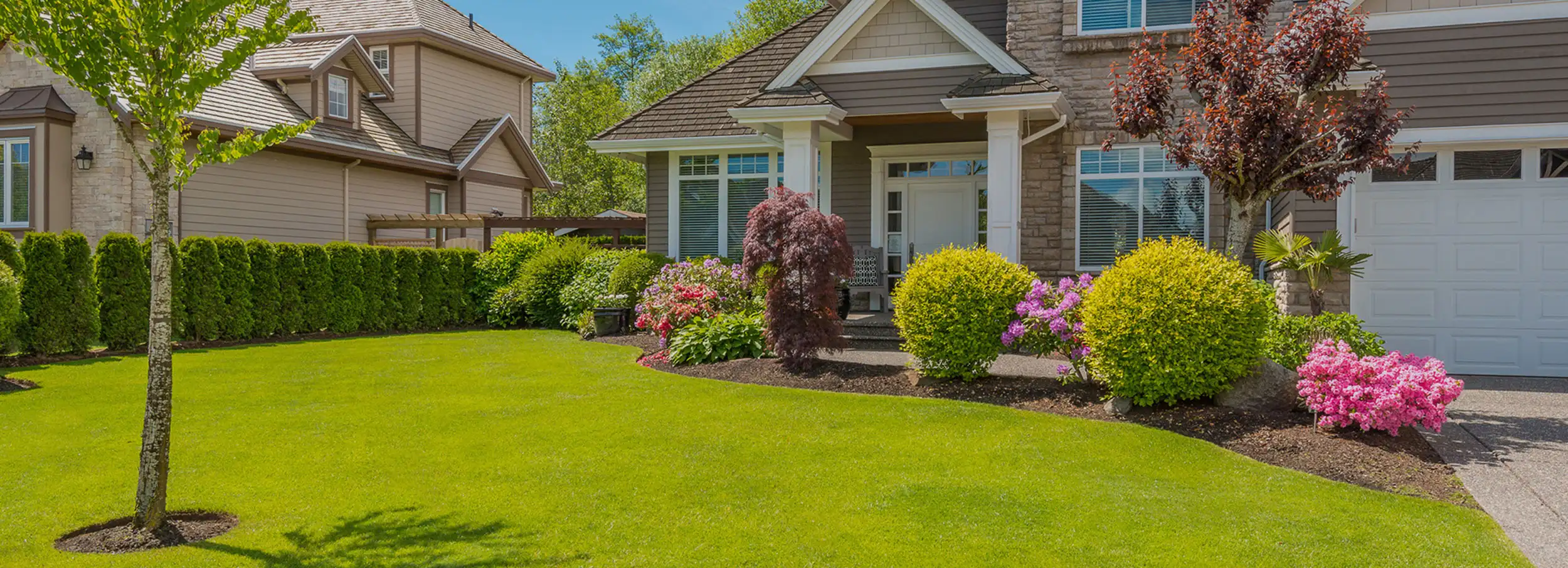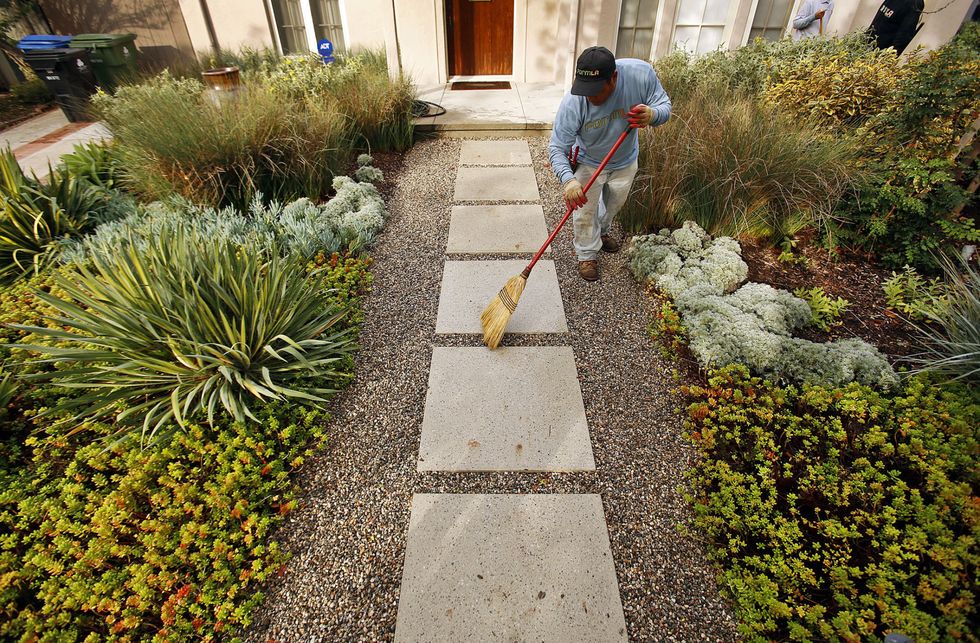Elevate Your Residential or commercial property's Aesthetic With Lasting Landscape Design Layouts and Eco-Friendly Practices

Benefits of Sustainable Landscape Design
Implementing sustainable landscaping practices not just saves all-natural resources but also advertises biodiversity and improves overall environmental wellness. By picking environment-friendly landscaping techniques, residential property owners can reap a wide range of benefits that extend beyond just aesthetic allure. One considerable benefit is the reduction of water consumption with using drought-resistant plants, rain gardens, and reliable watering systems. This not only decreases utility bills yet additionally adds to water preservation initiatives in the area.
Additionally, sustainable landscape design can improve soil health by minimizing using chemical fertilizers and chemicals, thereby creating a healthier atmosphere for plant growth and helpful dirt organisms. This, consequently, boosts the general strength of the landscape to hold up against ecological stress factors and climate modification impacts - bush removal Jacksonville. Additionally, sustainable landscape design practices can attract diverse wildlife, including pollinators like bees and butterflies, fostering an extra dynamic and balanced environment within the residential or commercial property
Incorporating Indigenous Plants
To build on the advantages of lasting landscaping, a tactical emphasis on including indigenous plants can further enhance environmental strength and promote biodiversity within the landscape. Indigenous plants are species that naturally occur in a specific location and have developed to prosper in the neighborhood environment, dirt problems, and ecological community. By including native plants in landscaping layouts, residential or commercial property proprietors can minimize water use, reduce the requirement for chemical pesticides and plant foods, and sustain the local wild animals population.
Including native plants also assists in protecting the special personality and identity of a region's flora. These plants typically need much less upkeep once established, making them a cost-efficient and sustainable landscaping option in the long run. Furthermore, indigenous plants can bring in native pollinators like and butterflies, adding to the general health of the ecological community.
When picking indigenous plants for landscape design projects, it is important to pick types that are appropriate to the particular ecological problems of the site. Consulting with botanical gardens or neighborhood nurseries can supply useful support on selecting the best indigenous plants for a certain area. By integrating native plants into landscape design styles, residential property owners can develop stunning, sustainable exterior areas that benefit both the setting and the neighborhood.
:max_bytes(150000):strip_icc()/byladylpergola-f0e18912bd13494682b988bcf37c1265.jpg)
Water Preservation Methods
Efficient irrigation techniques play a critical role in sustainable landscape design practices, guaranteeing optimum water click over here now preservation initiatives in outdoor spaces. Carrying out methods such as drip watering, rain harvesting, and wise irrigation systems can substantially decrease water wastefulness while keeping a healthy landscape. Drip watering provides water directly to the origins of plants, lessening evaporation and drainage. Rain gathering entails collecting rain from roof coverings and storing it for later use in watering, decreasing the dependence on local water resources. Smart irrigation systems make use of weather information and soil moisture levels to adjust watering schedules, stopping overwatering and promoting water effectiveness.
Along with sophisticated irrigation approaches, xeriscaping is one more water-saving landscaping method that concentrates on making use of drought-resistant plants, mulch, and reliable watering to create a low-water landscape layout - bush removal Jacksonville. By choosing native plants that are fit to the neighborhood environment and soil conditions, residential property proprietors can decrease the demand for extreme watering, ultimately conserving water and advertising a sustainable outdoor atmosphere
Eco-Friendly Hardscaping Concepts
Enhancing outdoor rooms with eco-friendly hardscaping attributes can contribute considerably to sustainable landscaping practices. When considering hardscaping components, go with materials like reclaimed wood, recycled concrete, or all-natural stone to decrease environmental effect. These products not only add a special aesthetic allure to your outdoor room however also decrease the demand for new resources removal.
Carrying out permeable paving alternatives such as gravel or absorptive concrete can help in reducing water runoff and promote groundwater recharge. These choices permit rain to seep find out here into the ground, stopping erosion and decreasing the concern on stormwater systems.
Integrating indigenous plants right into hardscaping designs can even more improve eco-friendliness by sustaining local wildlife and lowering the requirement for excessive watering or chemical treatments. By including environment-friendly wall surfaces or vertical yards, you can introduce more vegetation into urban setups, improving air quality and biodiversity.
Integrating energy-efficient lights, such as solar-powered LEDs, into hardscaping designs can reduce electrical power usage and lower your property's carbon footprint. Prioritizing green hardscaping concepts not just boosts the charm of your outdoor room but likewise demonstrates a commitment to environmental stewardship.
Upkeep Tips for Lasting Landscapes

On a regular basis trim plants to promote healthy development and prevent overgrowth that can cause pest infestations or diseases. Usage natural fertilizers to nurture the soil and plants without damaging chemicals that can leach right into the environment. For hardscaping components, such as absorptive pavers or stone pathways, routinely tidy them to protect against debris build-up and maintain their performance. By remaining positive with maintenance tasks, you can maintain the appeal and sustainability of your useful link landscape for several years to come.
Conclusion
Finally, sustainable landscaping practices provide numerous advantages for homeowner, from improving the aesthetic appeal of the surroundings to promoting environmental preservation. By including native plants, executing water conservation strategies, and making use of eco-friendly hardscaping concepts, residential property proprietors can develop attractive landscapes that are additionally ecologically liable. With proper maintenance, lasting landscapes can grow and contribute to a much healthier community for both humans and wildlife.
Moreover, lasting landscape design can boost dirt wellness by reducing the usage of chemical plant foods and pesticides, therefore producing a much healthier atmosphere for plant growth and advantageous soil organisms.To construct upon the advantages of lasting landscaping, a critical emphasis on incorporating native plants can even more boost ecological durability and promote biodiversity within the landscape. By including native plants in landscaping designs, property owners can lower water usage, reduce the requirement for chemical pesticides and fertilizers, and sustain the neighborhood wild animals populace.
These plants frequently require less maintenance once established, making them a lasting and cost-effective landscape design remedy in the long run. By incorporating native plants right into landscape design layouts, building proprietors can create gorgeous, sustainable outdoor areas that profit both the neighborhood and the atmosphere.